
All categories
Featured selections
Trade Assurance
Buyer Central
Help Center
Get the app
Become a supplier

(138 products available)





















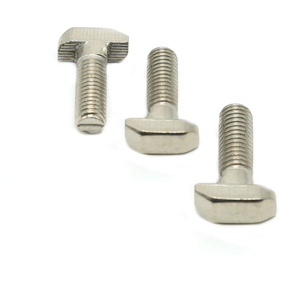



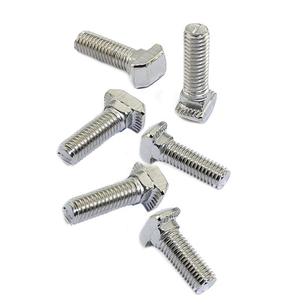




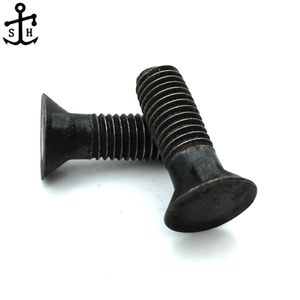






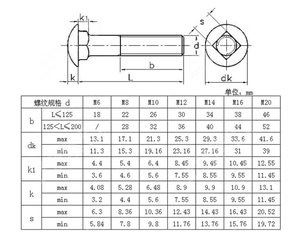

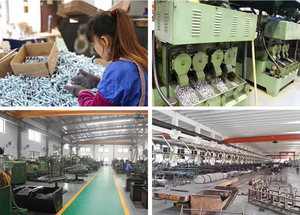





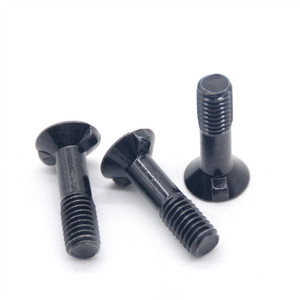
Countersunk nib bolts come in different types. Each type is suited for a particular application based on various construction specifications and requirements. Here are these types of bolts and their features and benefits.
These bolts offer premium corrosion resistance. Thus, they can be used in challenging external and marine environments. Often, stainless steel bolts are used where metal fatigue from rust and environmental factors is likely. This makes them ideal for construction in highly corrosive areas.
These bolts provide a tighter grip and a greater load-bearing capacity than standard nib bolts. As such, high-strength nib bolts are primarily used in heavy-duty applications. Common examples here are structural components in bridges, machinery, and larger vehicles.
Usually, these bolts are hardened to provide strength. Therefore, they are suitable in situations where standard steel bolts may fail due to high mechanical stress. Common examples of these situations include high-load applications in machinery and vehicles.
These bolts are often used in the automotive industry and heavy machinery. Their tensile strength makes them ideal for use in high-stress areas. Also, their golden color indicates that they are treated with cadmium plating, which improves corrosion resistance.
Grade 8 bolts are considered in scenarios where safety and structural integrity are critical due to their strength and durability.
Countersunk nib bolts have specific characteristics that make them suitable for various applications. The features include:
Usually, countersunk nib bolts are manufactured in stainless steel, alloy steel, titanium, and other steel grades. The choice of material impacts the bolt’s strength, weight, and resistance to environmental factors.
For example, titanium nib bolts are lightweight and rust-proof, making them ideal for aerospace and marine applications. On the other hand, alloy and high-strength nib bolts are preferred in construction and engineering since they resist mechanical stress.
The nib or projection on the bolt's shank serves to improve grip within the substrate. This ensures minimal displacement under load. Nibs come in varying shapes and sizes, each tailored to specific materials or applications. For instance, a broader nib is designed for softer materials. This is as a deeper profile would be suitable for harder substrates like metal or composite materials.
The countersink angle on the bolt's head is typically 82°-90°. It ensures the bolt sits flush with the surface of the material. This flush finish is vital in many applications. These include aerodynamics in the automotive and aerospace sectors or creating a smooth surface in construction for safety and aesthetics.
In addition, the head design allows for compatible countersunk screw tools. These screw tools ensure easy and consistent installation across various applications. This reduces the risk of head stripping and improves torque transmission.
Countersunk nib bolts come with various finishes and coatings to enhance their corrosion resistance and other factors. These finishes include galvanization, powder coating, and cadmium plating.
For example, bolts with a gold-colored finish are often cadmium-plated for corrosion resistance. On the other hand, bolts with black finishes are usually coated with anti-corrosion oils. Apart from enhancing aesthetics, these oils reduce glare and rust while protecting against various environmental elements.
Although traditionally not high in sustainability, many modern counterbore bolts are designed with recyclable materials. These materials include biocompatible coatings that minimize environmental impact.
Manufacturers increasingly focus on sustainability to align with global environmental goals while still providing durable, high-performance products.
These bolts have widespread commercial applications. This is mainly due to their aesthetic and functional benefits. Companies prioritize aesthetic value and practicality when selecting these bolts, especially when refurbishing spaces or manufacturing products. Here are their uses:
Countersunk nib bolts in the aerospace industry aid in keeping aircraft parts firmly secured. Further, their flush finish minimizes drag, making them vital for ensuring optimal aircraft performance. Additionally, most of these bolts are resistant to fatigue and corrosion. This makes them ideal for security in the challenging environment of air travel.
Here, these bolts are used to secure body panels, fasten components, and install trim. The flush finish enhances the vehicle's sleek and streamlined appearance. More importantly, it reduces air resistance. Additionally, the nib design provides a strong grip on varied substrates. This includes softer metals and plastics common in vehicle interiors.
Countersunk nib bolts are ideal for the marine industry as they resist corrosion due to saltwater exposure. Commonly, they securely fasten boat hardware, decks, and other marine structures. Seamlessly integrating into designs, they maintain boats' safety and longevity without compromising aesthetic value.
These bolts are useful in securing components like housings and circuit boards in electrical devices. They are especially critical in keeping the device sleek and streamlined for heat sinks and casings. Their nib design ensures minimal risk of damage to delicate electronic components. This is vital for devices where space and weight are critical.
In this space, countersunk nib bolts fasten machinery, equipment, and heavy structures. They are especially vital in high-load environments such as heavy machinery and construction equipment. These bolts provide long-lasting security and stability due to their durability. This is particularly under stress. Moreover, they ensure that worker safety is prioritized with a smooth finish to minimize snagging.
These bolts are increasingly being used to assemble furniture. Their ability to stay flush with wooden or composite board surfaces makes for a refined, professional appearance. This goes along with the strength necessary for holding pieces like tables, chairs, and cabinets together. Further, countersunk nib bolts make hardware easily removable for repairs or transport. This adds to their versatility.
When buying countersunk nib bolts, several factors come into play. These factors influence the bolts' performance, durability, and overall application reliability. Here are these factors as a guide to selecting these bolts:
The nib design enhances grip. This property makes the bolt suitable for carrying heavier loads in its application. Apart from considering the material and nib shape, it's vital to look at the bolt's diameter and length. Normally, longer bolts provide better load distribution. At the same time, larger diameter bolts bear heavier loads.
If the application will likely expose the bolts to water, chemicals, or salt, choosing a corrosion-resistant material is advisable. Stainless steel offers superior resistance. While titanium bolts have unmatched rust resistance and strength-to-weight ratio.
For high-stress or heavy-load applications, look for bolts made from high-strength materials like alloy steel. Further, the grade of the bolt can indicate its strength. Grade 8 bolts are ideal in demanding automotive or industrial applications.
However, if the application concerns cosmetic appeal, which is the case for marine or automotive uses, the bolt's finish will be critical. These are finishes like black oxide for a sleek appearance or cadmium plating for corrosion resistance.
First, consider what substrates the bolt will go into. A wider nib accommodates softer materials. On the other hand, a narrower nib handles harder substrates. Additionally, consider the countersink angle and diameter to fit the existing countersinks in the application.
Various industries require these bolts to meet specific standards. This is especially true in automotive, aerospace, and construction industries. These standards are often in terms of tensile strength, material composition, and coating.
A1. These bolts provide a flush finish on surfaces. This makes them ideal for applications where aesthetics or aerodynamics are essential. Their countersink angle allows them to sit level with the surrounding material. Hence, reducing snagging or hanging.
A2. Typically, they are manufactured from various materials. These materials include stainless steel, alloy steel, titanium, and high-strength steel. Each material offers unique benefits. These benefits are based on load requirements, environmental factors, and corrosion resistance.
A3. Typically, the reusability of these bolts largely depends on the application. These include whether they have been subjected to extreme loads or they've been corroded. If they have not been heavily stressed, countersunk nib bolts are usually reusable.
A4. Generally, countersunk nib bolts have common applications across various industries. These industries include automotive, aerospace, marine, and construction. They are often used in furniture and electronics as well due to their versatile strength, aesthetic appeal, and corrosion resistance.
A5. What distinguishes these bolts from standard nib bolts is their recessed head. It allows the bolt to sit flush against the surface for a smoother finish. On the other hand, standard nib bolts protrude above the surface. Thus, offering a more rugged and utilitarian appearance.